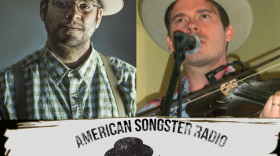While still a very young person, Martin Fisher fell in love with a very old machine. It was Christmas in Tennessee, and Martin's parents kept pestering him to submit his list. Martin remembers that his quirky, nine-year-old self wasn't all that interested in gifts. But his parents persisted, and Martin came up with a response: "I finally said, 'Ok. I'm gonna call their bluff.' And I said, 'have the elves hook up a cylinder player.'"
He knew it was an outlandish request. Audio cylinders, ancestors of disc-shaped records, hadn't been common since the early 20th century. It wouldn't be easy to find one of the machines that played them. But to Martin's surprise and delight, a fully functioning machine was waiting for him under the tree. "My dad said, 'I looked, and looked, and sweated, and finally found one'," Martin remembers.
Download Episode 5 to hear the whole discussion and unreleased recordings of tracks like 'Uncle Joe' and 'Keep On Truckin' Mama.'
Martin had a fascination with the sounds of the past, and listening to the cylinder phonograph became his way of tuning in to an earlier era of sonic culture. It was an antique piece of equipment, but Martin learned how it operated and kept it running. Like other styles of phonograph, the cylinder player used a mechanical process to translate recorded grooves back into sound waves in the air. Martin eventually acquired the equipment to do the reverse--to record acoustic sound onto blank cylinder media, just like the original cylinder recordists had done at the turn of the century. With this development, Martin found a new calling that complemented his work collecting and restoring cylinder machines. He soon began recording contemporary musicians on the antique cylinder format.
Watch Dom Cut A Wax Recording With Martin Fisher's Help:
On Episode 5 of American Songster Radio, host Dom Flemons speaks with Martin about his journey as a cylinder enthusiast. Dom introduces listeners to the concept of the cylinder, and illustrates the sound aspects of the medium by comparing two versions of his song "Charming Betsy." In conversation, Dom and Martin reflect on the lived experience of making cylinder recording in the 21st century, and Dom shares examples from several of his sessions with Martin. Dom observes:
"To be able to sing into that horn and hear it back, it takes you back to a time we would usually think of as an old fashioned time that's very far away from us. But you find out that the people from the past are a lot more modern than we tend to give them credit for. Especially when you hear the stuff coming back out of the horn at you. All the sudden you realize, 'Wow. I sound just like those people 100 years ago.'"










